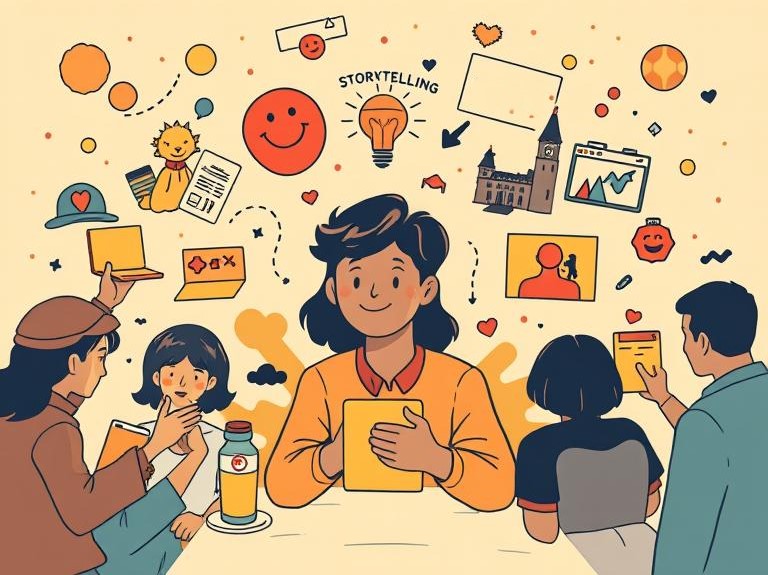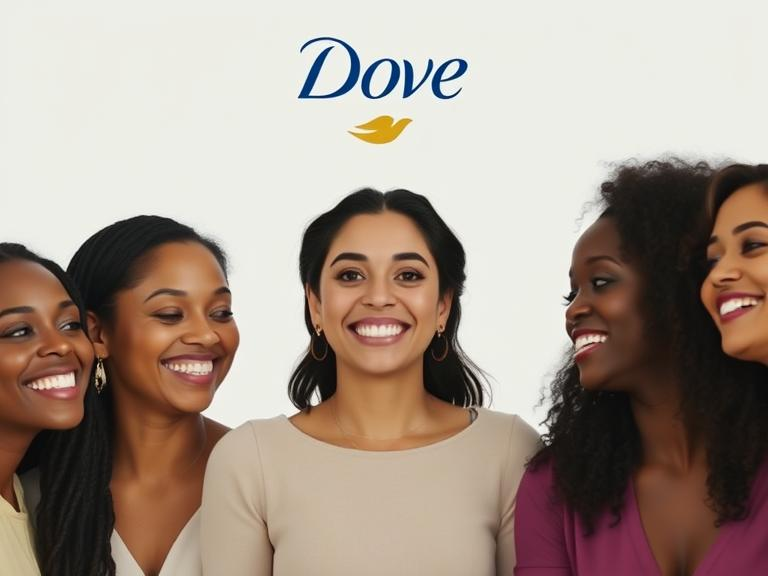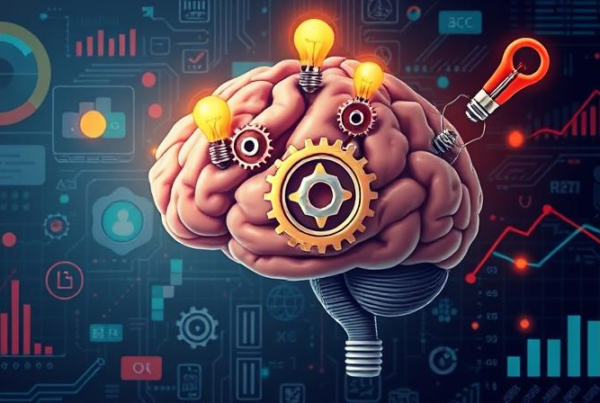In a world bombarded with over 10,000 ads per day, standing out is no easy feat. Yet, one approach consistently breaks through the noise, emotional marketing. Studies show that ads designed to trigger emotional responses perform 7x better than those focused solely on rational content. Why? Because emotions drive decisions.
Emotional marketing taps into powerful feelings like joy, fear, trust, and nostalgia to create memorable connections. It’s no surprise that some of the most iconic campaigns, from heartfelt holiday ads to motivational brand stories, thrive on emotional triggers.
So, how exactly does emotional marketing work, and why is it so effective? This guide explores its psychology, proven strategies, and powerful examples that showcase its true potential.
What is Emotional Marketing?
Emotional marketing is a strategy that targets emotions to drive engagement, influence purchasing decisions, and build customer loyalty. Instead of relying solely on product features or pricing, this method creates a memorable experience that resonates with the audience on a personal level.
For example, think of heartwarming holiday ads that bring families together or powerful campaigns that highlight social causes. These emotional marketing examples demonstrate how brands effectively use storytelling and emotional triggers to leave a lasting impact.
The Psychology Behind Emotional Marketing

Understanding consumer psychology is key to mastering emotional marketing. Studies show that emotions heavily influence decision-making, often more than logic.
People are more likely to remember emotionally charged moments than rational facts. This is why advertisements that trigger feelings like happiness, surprise, or even sadness tend to stay memorable. According to Harvard professor Gerald Zaltman, 95% of purchasing decisions are subconscious, making emotional marketing a powerful tool.
Brands that understand the psychology behind emotional marketing can effectively build deeper connections and increase customer retention. By aligning messages with emotions that resonate with their audience, companies can shape perceptions and influence decisions.
Emotional Marketing vs Traditional Marketing
1. Focus: Are You Appealing to Hearts or Minds?
Emotional marketing taps into human emotions like joy, trust, or fear to build deeper connections. It aims to make consumers feel something, creating memorable experiences. On the other hand, traditional marketing emphasizes facts, features, and logical reasoning to persuade buyers. It’s more focused on showcasing product benefits and specifications.
2. Message Style: Storytelling or Straight Facts
Emotional marketing often tells stories that resonate with the audience on a personal level. For instance, campaigns that highlight family values, friendship, or overcoming obstacles fall under this category. Meanwhile, traditional marketing typically uses direct messaging that focuses on product details, pricing, and performance.
3. Goal: Building Loyalty or Driving Quick Sales?
The goal of emotional marketing is to foster long-term relationships by creating positive associations with a brand. In contrast, traditional marketing prioritizes immediate sales, often encouraging quick purchasing decisions.
4. Psychological Triggers: Which Emotions Push Buyers to Act?
Emotional marketing leverages emotions like excitement, nostalgia, or even sadness to influence behavior. It aims to make consumers connect with the brand’s values. In contrast, traditional marketing relies on logic, facts, and practical benefits to convince buyers.
5. Audience Engagement: Creating Conversations or Just Broadcasting?
Emotional marketing encourages engagement by making consumers feel part of the brand’s journey. In contrast, traditional marketing often results in one-way communication where the focus is solely on product promotion.
6. Examples: Campaigns That Connect vs Ads That Inform
A well-known emotional marketing campaign is Nike’s “Just Do It”, which uses powerful storytelling to inspire motivation and empowerment. In contrast, a traditional marketing example would be an ad for a smartphone that highlights technical features like battery life, camera quality, and storage capacity.
7. Which Strategy Should You Choose?
While emotional marketing excels at building brand loyalty, traditional marketing is effective when promoting straightforward product features. For the best results, businesses can combine both strategies to create impactful campaigns that connect emotionally while providing clear product benefits.
5 Emotional Marketing Strategies to Boost Engagement

Crafting an effective emotional marketing strategy requires thoughtful planning. Here are five proven techniques to connect with your audience:
1. Storytelling for Emotional Connection
Storytelling is a powerful emotional marketing strategy that connects with audiences on a deeper level. Instead of pushing facts, it evokes emotions through relatable narratives.
(i) Memorability
Emotional stories stick with people longer, making your brand unforgettable. They create lasting impressions that facts alone can’t achieve.
(ii) Trust Building
Stories that highlight struggles, achievements, or values foster trust. Consumers connect better with brands that share authentic experiences.
A compelling story can turn your brand into something consumers remember, relate to, and trust.
2. Creating Nostalgia-Driven Campaigns
Nostalgia taps into cherished memories, making consumers feel comforted and connected. This emotional marketing strategy strengthens brand loyalty by evoking positive past experiences.
(i) Emotional Bonding
Familiar themes, iconic visuals, or memorable jingles can instantly transport people back to joyful moments, creating a stronger emotional connection with your brand.
(ii) Brand Recall
Campaigns that reflect past trends, cultural moments, or childhood memories tend to stick in consumers’ minds longer, enhancing brand recognition and customer loyalty.
Nostalgia-driven marketing transforms emotions into action by reminding consumers of moments they treasure.
3. Using Social Proof to Build Trust
People trust people. Showcasing real experiences builds credibility and influences buying decisions. Social proof leverages this psychological trigger effectively.
(i) Boosts Confidence
When potential customers see positive reviews and success stories, they feel reassured that your product or service has delivered real value to others. This reduces hesitation and makes buyers feel safer in their purchasing decision.
(ii) Creates Relatability
User-generated content, such as customer photos or video testimonials, allows people to see others like themselves benefiting from your product. This relatable approach helps establish stronger emotional connections.
Highlighting satisfied customers not only builds trust but also encourages new buyers to feel confident in your product or service.
4. Leveraging User-Generated Content
People love to share their experiences, and smart brands use this to their advantage. Encouraging customer-created content fosters connection and authenticity.
(i) Builds Community
When customers see their photos, videos, or stories featured, they feel valued and connected to the brand. This sense of belonging encourages deeper emotional ties.
(ii) Inspires Authenticity
Real-life content feels more genuine than staged ads. Seeing real users enjoying a product makes potential buyers trust the brand more easily.
Showcasing user-generated content turns loyal customers into powerful brand advocates.
5. Building Empathy Through Personalized Messaging
Empathy-driven marketing resonates by making customers feel seen and understood. Personalizing content ensures your message speaks directly to their emotions.
(i) Addresses Real Needs
Tailoring messages to individual pain points shows you genuinely understand customer struggles, fostering trust and loyalty.
(ii) Creates a Sense of Value
Personalized emails, offers, or recommendations make customers feel appreciated, encouraging stronger emotional connections.
Empathetic, personalized messaging turns casual buyers into long-term supporters by showing you care about their unique experiences.
Emotional Marketing Examples That Drove Massive Results

Successful brands have mastered emotional marketing by tapping into feelings that resonate with their audience.
1. Dove’s “Real Beauty” Campaign
Dove’s iconic campaign is a prime emotional marketing example that challenged traditional beauty standards. By showcasing real women of diverse shapes, sizes, and backgrounds, Dove tapped into feelings of self-confidence and acceptance. This emotional marketing strategy fostered trust, strengthened brand loyalty, and deeply resonated with audiences worldwide.
2. Always’ “Like a Girl” Campaign
Always tackled gender stereotypes by redefining what it means to do something “like a girl.” By empowering young girls and promoting self-confidence, the campaign emotionally connected with viewers. With over 90 million views, it showcased how emotional marketing can challenge social norms while driving meaningful engagement.
3. Google’s “Year in Search” Campaign
Google’s emotional marketing strategy highlights powerful moments from global events, celebrating human connection and resilience. By featuring uplifting stories of hope and unity, Google evokes strong emotions, reminding audiences of their shared experiences and values.
These emotional marketing examples demonstrate how brands create lasting impact by aligning with emotions.
How to Create an Effective Emotional Marketing Strategy
Building a strong emotional marketing strategy requires understanding your audience’s emotions and preferences.
1. Identify Key Emotional Triggers
Pinpointing the right emotional triggers is crucial for a successful emotional marketing strategy. Identify emotions that align with your brand’s values and audience preferences. Whether it’s excitement for a product launch or nostalgia for cherished memories, selecting the right triggers drives engagement.
(i) Understand Your Audience
Conduct surveys or analyze customer feedback to uncover emotional pain points and desires.
(ii) Align with Your Brand
Choose emotions that complement your brand’s mission, ensuring authenticity in your messaging.
Identifying the right emotional triggers helps brands connect deeply with their audience. By understanding what drives emotions, you can craft campaigns that leave a lasting impact.
2. Craft Authentic Stories
Emotional marketing thrives on authentic storytelling that resonates with your audience. By sharing real-life experiences or heartfelt customer journeys, brands can foster trust and create lasting impressions.
(i) Showcase relatable struggles or triumphs
Highlight customer challenges and how your product or service helped them overcome those obstacles. This creates a sense of empathy, making your audience feel seen and understood.
(ii) Use customer testimonials to demonstrate impact
Feature detailed success stories where real customers explain how your brand positively influenced their lives. This adds credibility while strengthening emotional connections.
Genuine stories leave a lasting impact, building trust and encouraging long-term loyalty.
3. Personalize Your Messaging
Customizing content based on audience preferences and behaviors is a powerful emotional marketing strategy. It shows consumers that your brand understands their unique needs and values.
(i) Segment your audience for tailored communication
Divide your audience into groups based on demographics, interests, or purchase history. This allows you to deliver content that feels personal and relevant.
(ii) Use dynamic content in campaigns
Personalized product recommendations, customized email greetings, or special offers based on browsing habits can significantly boost engagement.
Personalization creates a sense of exclusivity, making customers feel valued and increasing their emotional attachment to your brand.
4. Use Visual Elements Wisely
Visual elements are crucial in emotional marketing, as they evoke feelings instantly. Brands that align their visuals with emotional triggers can leave lasting impressions.
(i) Color psychology matters
Warm colors like red and yellow evoke excitement and passion, while cool tones like blue promote trust and calmness. Choosing the right palette strengthens emotional impact.
(ii) Incorporate meaningful imagery
Photos of smiling faces, family gatherings, or heartfelt moments can evoke empathy, joy, or nostalgia, reinforcing your brand’s message.
Thoughtfully designed visuals amplify emotions, making your marketing more memorable and impactful.
5. Align With Social Causes
Supporting social causes allows brands to connect with audiences on a deeper, emotional level. When consumers see a brand standing for something they believe in, it builds trust and loyalty.
(i) Show authentic commitment
Partner with charities, sponsor events, or donate a portion of sales to causes that align with your brand’s values. Genuine efforts resonate most.
(ii) Incorporate cause-driven campaigns
Highlight your support in advertisements, social media, or product packaging to remind consumers of your positive impact.
Aligning with social causes not only strengthens emotional bonds but also encourages long-term customer loyalty.
Emotional Triggers That Drive Sales

Certain emotions are known to influence purchasing decisions more than others. Understanding these triggers can enhance your emotional marketing strategy.
1. Joy and Excitement
Positive emotions like joy and excitement leave a lasting impression on consumers. Brands often achieve this through humorous ads, energetic visuals, or uplifting messages. These tactics create a sense of satisfaction, encouraging impulse purchases and fostering brand loyalty.
2. Fear and Urgency
Emphasizing potential risks or time-sensitive deals can push consumers to act quickly. Phrases like “Only a few left!” or “Offer ends tonight!” trigger fear of missing out (FOMO), motivating buyers to make immediate decisions.
3. Trust and Security
Trust is vital for winning over cautious buyers. Featuring verified reviews, displaying secure payment badges, or showcasing industry certifications reassures customers that your brand is credible and reliable, encouraging them to feel safe while making a purchase.
4. Nostalgia and Familiarity
Nostalgia taps into cherished memories, creating a sense of comfort and trust. Brands often use vintage designs, iconic jingles, or references to past trends to connect emotionally. This strategy strengthens loyalty by reminding customers of positive experiences.
Emotional Marketing in Social Media Campaigns

Social media thrives on emotional content, giving brands endless opportunities to connect with their audience. Platforms like Instagram, TikTok, Facebook, and Twitter are ideal for showcasing emotion-driven content that resonates with users.
Instagram and TikTok
These platforms excel at delivering short, visually engaging content. To leverage emotional marketing effectively:
- Use Emotion-Driven Visuals: Incorporate vibrant colors, expressive faces, and relatable scenarios to create an emotional impact.
- Pair Stories with Captivating Captions: Combining heartfelt narratives with powerful captions can inspire action.
- Leverage Trends and Music: Trending audio combined with authentic storytelling can evoke emotions like joy, excitement, or nostalgia.
For example, brands sharing behind-the-scenes content, customer transformations, or motivational stories often see higher engagement rates.
Facebook and Twitter
On these platforms, emotional marketing thrives through storytelling and conversation. Effective strategies include:
- Sharing Customer Experiences: Highlighting positive customer stories fosters trust and authenticity.
- Asking Thought-Provoking Questions: Encouraging users to reflect or share opinions builds emotional engagement.
- Using Interactive Content: Polls, quizzes, and open-ended discussions create connections by inviting participation.
By integrating emotional marketing into your social media campaigns, you can build stronger customer relationships, boost engagement, and foster a loyal online community.
The Role of Music and Sound in Emotional Marketing
Music plays a vital role in evoking emotions and shaping consumer perceptions. It triggers memories, enhances storytelling, and strengthens brand identity.
1. Emotional Amplifier
Music heightens feelings of joy, nostalgia, or excitement. For example, upbeat tunes in ads can energize viewers, while soft melodies can evoke warmth and comfort.
2. Brand Recognition
Distinctive sounds like Intel’s iconic jingle create immediate brand recall. Consistently using memorable audio cues can build stronger emotional connections with consumers.
Incorporating the right music enhances emotional marketing strategies, making campaigns more impactful and unforgettable.
Emotional Marketing for Small Businesses
Even with limited resources, small businesses can successfully leverage emotional marketing by focusing on meaningful connections.
1. Focus on Local Values
Emphasizing community involvement, sponsoring local events, or collaborating with neighborhood businesses can create a strong emotional bond with your audience. Consumers often support brands that reflect their own values.
2. Highlight Customer Stories
Showcasing genuine customer experiences or success stories personalizes your brand, making it relatable and trustworthy. Sharing these stories on social media or websites can significantly boost engagement.
Emotional marketing doesn’t require large budgets, authenticity and relatable messaging are what truly resonate.
Final Thoughts: Emotional Marketing for Long-Term Growth
Emotional marketing has proven to be a powerful strategy for brands aiming to connect with their audience on a deeper level. By understanding the psychology behind emotional marketing and implementing strategies like storytelling, nostalgia, and social proof, businesses can create campaigns that leave a lasting impression.
Balancing emotional appeal with factual benefits ensures a stronger connection with customers, resulting in better engagement, loyalty, and ultimately, sales. Embracing emotional marketing is no longer optional, it’s essential for success in today’s competitive landscape.





